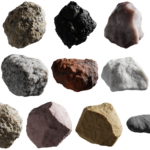Relative Dating Lesson Plan: Earth’s Systems
*Click to open and customize your own copy of the Relative Dating Lesson Plan
This lesson accompanies the BrainPOP topic Relative Dating, and supports the standard of analyzing and interpreting data to understand Earth’s history. Students demonstrate understanding through a variety of projects.
Step 1: ACTIVATE PRIOR KNOWLEDGE
Display an image of rocks and rock layers, like those shown below:
Ask students:
- What have you noticed about rocks?
- Where else have you seen rock layers? What can you infer about them?
Step 2: BUILD KNOWLEDGE
- Read aloud the description on the Relative Dating topic page.
- Play the Movie, pausing to check for understanding.
- Have students read one of the following Related Reading articles: “Flora and Fauna” or “Mother Nature”. Partner them with someone who read a different article to share what they learned with each other.
Step 3: APPLY and ASSESS
Students take the Relative Dating Quiz., applying essential literacy skills while demonstrating what they learned about this topic.
Step 4: DEEPEN and EXTEND
Students express what they learned about relative dating while practicing essential literacy skills with one or more of the following activities. Differentiate by assigning ones that meet individual student needs.
- Make-a-Movie: Produce a mini-documentary about an important discovery related to Earth’s history from the point of view of one of the featured scientists.
- Make-a-Map: Make a concept map comparing and contrasting relative age and absolute age.
- Creative Coding: Code a debate between geologist James Hutton and a European from his time about the formation and age of Earth.
More to Explore
Time Zone X: Earth’s Structure: Place historical events in chronological order in this interactive timeline game.
Earth Systems Unit: Continue to build understanding around Earth and geology by exploring more BrainPOP topics.
Teacher Support Resources:
- Pause Point Overview: Video tutorial showing how Pause Points actively engage students to stop, think, and express ideas.
- Learning Activities Modifications: Strategies to meet ELL and other instructional and student needs.
- Learning Activities Support: Resources for best practices using BrainPOP.













